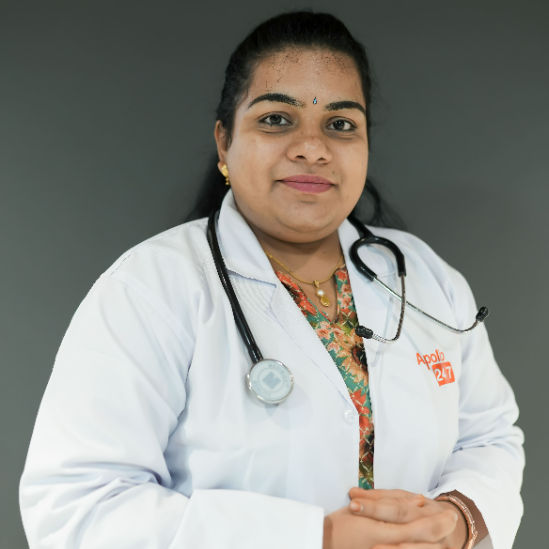Hydrocele Overview: Symptoms, Causes, and Treatment
Hydrocele causes painless swelling in the scrotum due to fluid buildup. Learn its symptoms, causes in babies and adults, and how it's diagnosed and treated effectively.

Written by Dr. Dhankecha Mayank Dineshbhai
Reviewed by Dr. M L Ezhilarasan MBBS
Last updated on 21st Aug, 2025

If you or a loved one has noticed swelling in the scrotum (the sac that holds the testicles), it might be due to a condition called hydrocele. While it can be concerning, hydroceles are usually harmless and treatable. This article will help you understand what a hydrocele is, its symptoms, causes, and available treatment options in simple terms.
What is a Hydrocele?
A hydrocele is a fluid-filled sac around a testicle, leading to swelling in the scrotum. It is common in newborn boys but can also occur in older males due to injury or infection. Most hydroceles are painless and resolve on their own, but some may require medical attention.
Symptoms of Hydrocele
The most noticeable sign of a hydrocele is swelling in one or both sides of the scrotum. Other symptoms may include:
- A feeling of heaviness in the scrotum
- Mild discomfort, especially if the swelling grows larger
- No severe pain (if pain occurs, it may indicate another condition)
In infants, hydroceles often disappear within the first year. In adults, if the swelling persists or increases, medical evaluation is recommended.
What Causes a Hydrocele?
Hydroceles can develop due to different reasons, depending on age:
In Babies (Congenital Hydrocele)
- Before birth, testicles develop inside the abdomen and move down into the scrotum through a small passage.
- Normally, this passage closes after birth, but if it remains open, fluid can accumulate around the testicle, causing a hydrocele.
In Older Males (Acquired Hydrocele)
- Injury or infection in the scrotum can lead to fluid buildup.
- Inflammation (e.g., due to epididymitis—an infection of the tube behind the testicle).
- Blockage in the spermatic cord (which carries sperm).
- Complications after surgery, such as hernia repair.
How is Hydrocele Diagnosed?
Doctors diagnose hydroceles through:
- Physical Examination – The doctor checks for swelling and may shine a light (transillumination) to confirm fluid
presence. - Ultrasound – If the swelling is large or painful, an ultrasound may be done to rule out other conditions like hernias or tumors.
Treatment Options for Hydrocele
Many hydroceles, especially in infants, go away without treatment. However, if needed, options include:
1. Observation (Wait-and-Watch Approach)
- Small, painless hydroceles may not require treatment.
- Doctors may monitor the swelling over time.
2. Surgery (Hydrocelectomy)
- If the hydrocele is large or causes discomfort, a minor surgical procedure can drain the fluid and close the passage to
prevent recurrence. - Recovery is usually quick, with minimal discomfort.
3. Needle Aspiration (Less Common)
- A needle is used to drain the fluid, but this is rarely done as the fluid may return.
Can Hydrocele Be Prevented?
Since most hydroceles in babies occur naturally, they cannot be prevented. In adults, reducing the risk of injury or infection in the scrotal area may help.
Consult Top General Practitioner
When to See a Doctor?
Consult a doctor if:
- The swelling increases in size or becomes painful.
- There is redness, fever, or sudden pain (signs of infection).
- The hydrocele does not resolve on its own in infants after a year.
Final Thoughts
Hydroceles are usually harmless, but persistent or painful swelling should be evaluated by a doctor. If you or your child has symptoms, don’t hesitate to seek medical advice. Early diagnosis ensures proper treatment and peace of mind.
Need Help? Book a Consultation Today!
If you suspect a hydrocele or have concerns about scrotal swelling, consult a specialist at Apollo 24|7. You can easily schedule an appointment or diagnostic test through our app or website.
Consult Top General Practitioner
Consult Top General Practitioner

Dr Suseela
General Physician
5 Years • MBBS
Bengaluru
Apollo Medical Center, Marathahalli, Bengaluru
Dr. Gaddam Manoj
General Practitioner
1 Years • MBBS
Hyderabad
Aaradhya clinic, Hyderabad
Dr. Sahana B
General Practitioner
3 Years • MBBS
Koppal
Khushi multi-speciality hospital, Koppal

Dr. Siri Nallapu
General Practitioner
5 Years • MBBS
Hyderabad
Apollo 24|7 Clinic, Hyderabad

Dr S Lakshmi Narasimha Reddy
General Practitioner
9 Years • MBBS
Kondapur
Singam's Kids Clinic, Kondapur
Consult Top General Practitioner

Dr Suseela
General Physician
5 Years • MBBS
Bengaluru
Apollo Medical Center, Marathahalli, Bengaluru
Dr. Gaddam Manoj
General Practitioner
1 Years • MBBS
Hyderabad
Aaradhya clinic, Hyderabad
Dr. Sahana B
General Practitioner
3 Years • MBBS
Koppal
Khushi multi-speciality hospital, Koppal

Dr. Siri Nallapu
General Practitioner
5 Years • MBBS
Hyderabad
Apollo 24|7 Clinic, Hyderabad

Dr S Lakshmi Narasimha Reddy
General Practitioner
9 Years • MBBS
Kondapur
Singam's Kids Clinic, Kondapur
